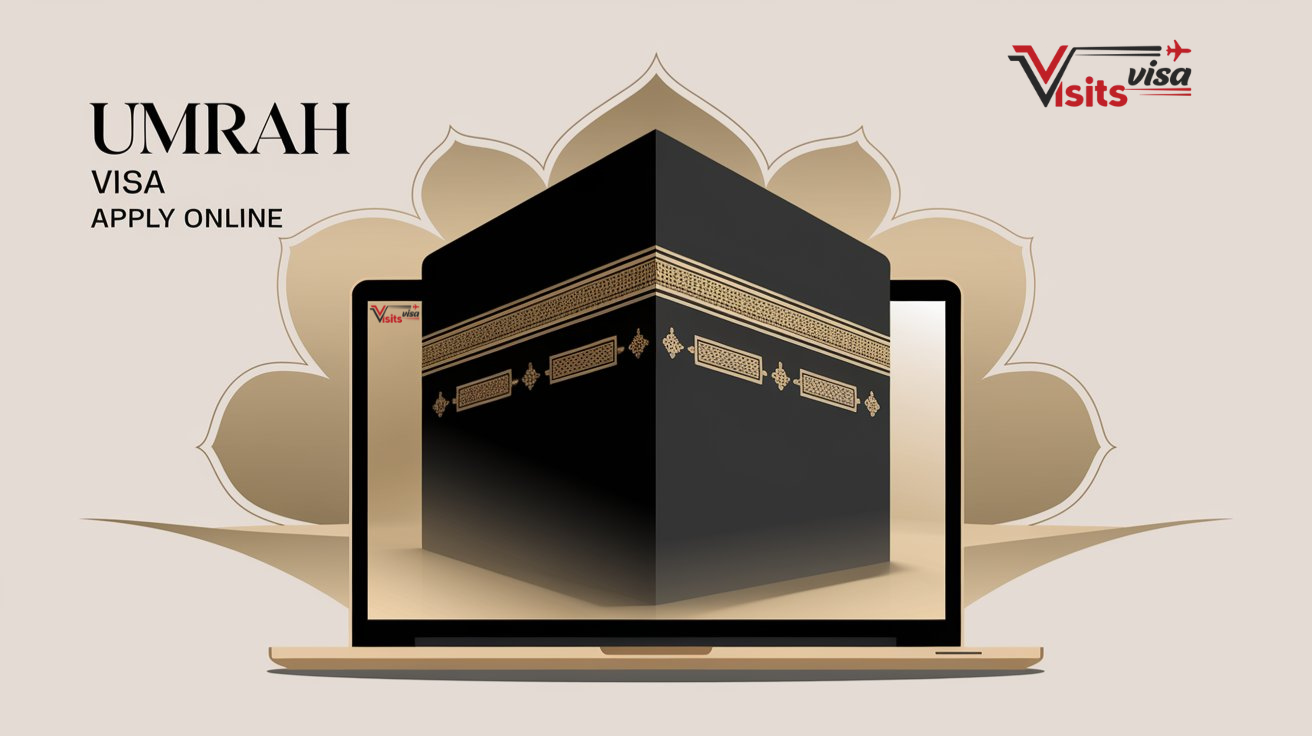Introduction
Hajj and Umrah are the two most important pilgrimages in Islam, attracting millions of Muslims from all over the world to the holy cities of Mecca and Medina in Saudi Arabia. While Hajj is a mandatory pilgrimage that every Muslim must perform at least once in their lifetime, provided they have the means, Umrah is a voluntary pilgrimage that can be performed at any time of the year.
Both pilgrimages require the proper documentation, including a specific visa to enter Saudi Arabia for these religious purposes. This guide will provide detailed information about Hajj and Umrah visas, including the application process, requirements, and main differences.
What is Hajj?
The Hajj is one of the five pillars of Islam and takes place every year in the Islamic month of Dhu al-Hijjah. Every Muslim who is physically and financially able is required to perform the Hajj at least once in their lifetime. The pilgrimage involves several rituals and ceremonies that commemorate the deeds of the Prophet Abraham and his family. These include the Tawaf, or circumambulation, of the Kaaba, located between the hills of Safa and Marwah at Sayyid and Arafat.
The Hajj is a demonstration of Muslim unity and an opportunity for spiritual renewal and forgiveness. It is considered the largest annual gathering of people in the world. Completing the Hajj is a religious milestone for Muslims, often an opportunity to wipe away past sins and make a fresh start.
What is Umrah?
Umrah is known as the ‘small pilgrimage’; unlike the Hajj, it is not compulsory. However, its spiritual significance is immense. Umrah can be performed at any time of the year and involves a few small rituals, mainly the Tawaf and Sa’i, similar to those performed during the Hajj. Despite being less complicated, Umrah is still an enriching act of worship for Muslims.
Importance of Umrah
Umrah gives Muslims a chance to seek Allah’s blessings, pray for their needs, and purify their souls. It is often performed to seek forgiveness and guidance and blessings in one’s life.
Types of Hajj and Umrah Visas
Pilgrims to perform Hajj or Umrah require a visa specifically designated for these purposes. Saudi Arabia issues two main types of visas for pilgrims:
- Hajj Visa
- Umrah Visa
Hajj Visa
The Hajj visa is only issued during the Hajj season, corresponding to the Islamic month of Dhu al-Hijjah. The process and requirements for obtaining a Hajj visa are strict to manage the massive influx of pilgrims. The Hajj visa is typically valid for a short period, allowing pilgrims to stay in Saudi Arabia just long enough to complete the pilgrimage.
Umrah Visa
On the other hand, the Umrah visa is available all year round except during the Hajj season. It allows pilgrims to visit Mecca and Medina to perform Umrah. The validity of the Umrah visa may vary, but it generally allows a stay of up to 30 days.
Applying for a Hajj or Umrah Visa
Eligibility Requirements
To apply for a Hajj or Umrah visa, applicants must meet certain criteria. These include:
- Being Muslim: Only Muslims are allowed to enter the holy cities of Mecca and Medina.
- Valid passport: The passport must be valid for at least six months from the date of application.
- Proof of mahram (for women): Women under the age of 45 must travel with a mahram (male relative).
- Vaccinations: Proof of vaccination for meningitis and other required vaccinations.
- Itinerary: Confirmed round-trip tickets and accommodation bookings.
Application Process
- Choose a registered travel agent: Pilgrims should apply through travel agents authorized by the Saudi government. These agents handle the visa application process, travel arrangements, and accommodation.
- Submit required documents: Complete the visa application form and submit it along with the required documents, including passport copies, photos, proof of mahram (if applicable), vaccination certificate, and itinerary.
- Pay fees: Pay the visa fee and any additional fees required by the travel agent.
- Wait for processing: Processing times may vary, so it is advisable to apply well in advance of the planned departure date.
- Get the visa: Once the visa is approved, it will be affixed to the passport by the Saudi consulate.
Key Differences Between Hajj and Umrah Visas
Although both visas allow entry into Saudi Arabia for religious purposes, there are some key differences:
- Seasonal: Hajj visas are only issued during the specific Hajj period, while Umrah visas are available all year round except for Hajj.
- Duration: Hajj visas are valid for a shorter period, generally covering the period needed to perform the Hajj rituals. Umrah visas offer more flexibility with a validity of up to 30 days.
- Processing requirements: The Hajj visa application process is more stringent due to the larger number of pilgrims and logistical considerations.
VisitsVisa: Your Top Umrah Visa Provider
When planning an Umrah pilgrimage, it is important to select a reliable and experienced visa provider. VisitsVisa stands out as a top choice for several reasons:
- Expertise and Experience: With years of experience in handling Umrah visa applications, VisitsVisa has established a reputation for efficiency and reliability.
- Comprehensive Services: From visa application assistance to travel arrangements and accommodation booking, VisitsVisa offers a full range of services to ensure a hassle-free pilgrimage.
- Customer Support: Dedicated customer support ensures that all queries and issues are resolved promptly, ensuring peace of mind throughout the entire process.
- Affordable Packages: VisitsVisa offers various packages to suit different budgets, ensuring that the spiritual journey becomes accessible to as many pilgrims as possible.
By choosing VisitsVisa you can focus on the spiritual aspects of your trip while leaving the logistical details in capable hands.
Preparing for the Pilgrimage
Spiritual Preparation
Both Hajj and Umrah are deeply spiritual journeys. Pilgrims are encouraged to prepare themselves spiritually by studying the rituals, understanding their significance, and making sure they are physically and mentally ready.
Practical Preparation
- Health check-up: Get a medical check-up done to ensure you are healthy for the journey and can meet the physical requirements of the pilgrimage.
- Packing: Pack religious clothing, personal hygiene items, medicines, and other essentials properly.
- Financial planning: Make sure you have enough money for the journey, including emergency expenses.
Cultural Sensitivity
Saudi Arabia has strict cultural norms and rules, especially in the holy cities. Pilgrims should be familiar with these rules to ensure respectful and proper behavior during their stay.
Performing Hajj and Umrah
Hajj Rituals
- Ihram: Entering the sacred state by wearing special clothing.
- Tawaf: Circumambulating the Kaaba seven times.
- Sa’i: Walking between the hills of Safa and Marwah.
- Arafat: Standing in prayer and contemplation on the plain of Arafat.
- Muzdalifa: Collecting pebbles for the ritual of stoning the devil.
- Ram al-Jamarat: Throwing stones at pillars symbolizes Satan.
- Janmat: Ritual sacrifice of an animal.
- Tawaf al-Ifada: Another circumambulation of the Kaaba.
- Shaving/cutting hair: Symbolizes purification and renewal.
- Tawaf al-Wada: Farewell circumambulation before leaving Mecca.
Umrah Rituals
- Ihram: Entering the state of Ihram.
- Tawaf: Circumambulating the Kaaba.
- Sa’i: Walking between Safa and Marwa.
- Shaving/Cutting Hair: Completing the Pilgrimage.
Common Challenges and Tips
Crowd Management
Hajj particularly involves managing huge crowds, which can be overwhelming. Pilgrims must stay hydrated, stick with their group, and follow the instructions of authorities.
Health and Safety
- Hydration and Nutrition: Ensure regular intake of water and a balanced diet.
- Rest: Take adequate rest to cope with the physical demands of the rituals.
- Emergency Services: Be aware of the location of medical and emergency services.
Weather Considerations
The weather in Saudi Arabia can be very hot, especially in the summer months. Pilgrims should wear light, airy clothing and clothing to avoid the sun.
Conclusion
Going on a pilgrimage to Mecca for Hajj or Umrah is an intensely spiritual journey that requires careful preparation and an understanding of Umrah visa requirements. By following the guidelines outlined in this article, pilgrims can ensure a smooth and satisfying experience. Whether to fulfill a religious obligation or to seek spiritual growth, visiting the holy cities is a unique opportunity for Muslims around the world.
FAQs
What is the difference between a Hajj visa and an Umrah visa?
The Hajj visa is issued specifically for the Hajj season and has a shorter validity period, while the Umrah visa can be obtained all year round except for the Hajj period and generally allows for longer stays.
Can non-Muslims apply for a Hajj or Umrah visa?
No, only Muslims are allowed to enter the holy cities of Mecca and Medina, and therefore, only Muslims can apply for a Hajj or Umrah visa.
What vaccinations are required for the Hajj and Umrah visas?
Travelers must present proof of vaccination for meningitis and may also need to show proof of other vaccinations such as influenza, depending on health regulations at the time of travel.
How long does the visa application process take?
Processing times may vary, but it is advisable to apply well in advance, especially for the Hajj visa, as the number of visas to be issued is limited and demand is high.
Is it necessary to go through a travel agent to apply for a Hajj or Umrah visa?
Yes, pilgrims must apply through travel agents authorized by the Saudi government. These agents handle the entire application process and travel arrangements.








